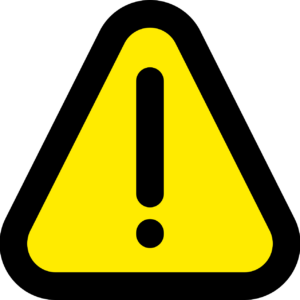Learn how to fix the “HTTP Error 500: localhost is currently unable to handle this request”. Our WordPress Support team is here to help you with your questions and concerns.
HTTP Error 500: localhost is currently unable to handle this request
 If you have ever run into a “500 Internal Server Error”, you already know how frustrating it can be. Unlike a 404 or 403, a 500 error doesn’t give much away. It simply tells us the server encountered something it couldn’t handle.
If you have ever run into a “500 Internal Server Error”, you already know how frustrating it can be. Unlike a 404 or 403, a 500 error doesn’t give much away. It simply tells us the server encountered something it couldn’t handle.
Worry no more. Our Experts are here to break down the most common causes and walk us through tried-and-tested solutions for fixing 500 errors, especially in WordPress environments.
An Overview:
What Causes a 500 Internal Server Error?
- The web server may not have permission to access the necessary files or folders.
- 500 errors are commonly caused by bugs in application code, such as infinite loops, syntax errors, unhandled exceptions, and undefined variables.
- If the application runs out of memory or CPU, it can crash and trigger a 500 error. This is often due to memory leaks, inefficient code or high traffic spikes.
- Incorrect directives in `.htaccess` can break the site.
- Some of the common WordPress-specific triggers include:
- Browser cache issues
- Corrupt WordPress core files
- Broken plugins or themes
- Incorrect database login credentials
- Corrupted database
- Broken `.htaccess` file
- PHP memory limit exceeded
- PHP timeouts
- Fatal PHP errors in third-party plugins
Need help with a similar WordPress issue? Here’s a deeper dive into how to fix a 500 internal server error when using WordPress Elementor.
How to Fix HTTP 500 Errors
Let’s look at different ways to diagnose and fix the issue:
1. Enable PHP Error Display
To make PHP errors visible:
- First, edit the PHP configuration file at:
/etc/php/7.0/apache2/php.iniThen, update these settings:
; display_errors
display_errors = On
; display_startup_errors
display_startup_errors = On
Next, restart Apache:
sudo systemctl restart apache2To replicate the same behavior for CLI, we have to edit `/etc/php/7.0/cli/php.ini`/
For local debugging via `.htaccess` runt his command:
vim /var/www/html/.htaccessThen, add:
# Displaying PHP errors
php_flag display_errors on
php_value error_reporting 6143
Or add this to the PHP script:
error_reporting(E_ALL);
ini_set('display_errors', 1);
2. Check File & Directory Permissions
Incorrect permissions can block access. In this scenario, run:
sudo chmod -R 777 /path/to/filesHere, `777` is helpful for debugging but should not be used in production. We can change to safer values later.
3. Disable Faulty Plugins
Plugins are a common culprit in WordPress.
We can check if they are causing the problem by going to wp-admin > Plugins > Deactivate all plugins and refreshing the site.
If the site loads, reactivate plugins one by one to find the faulty one.
Still seeing odd issues? You may be dealing with a more specific error like “Failed to load resource” in WordPress, which stems from misbehaving plugins or themes.
4. Switch to a Default Theme
Custom themes can cause issues, too. Try this:
- Rename the active theme folder.
- WordPress will fall back to a default theme.
- Reload the site to see if the error disappears.
Furthermore, if using a child theme, try deactivating the parent theme. This is especially useful if you’re troubleshooting how to fix a broken WordPress site.
5. Increase PHP Memory Limit
If we are hitting resource limits, try increasing the memory limit.
Edit `wp-config.php`:
define('WP_MEMORY_LIMIT', '256M');Or modify `php.ini`:
memory_limit = 256MThen, restart the server and reload the page.
6. Clear Browser Cache
Sometimes, a cached version of a page or script can conflict with new updates. Clearing the browser cache can help quickly rule this out.
7. Restart the Web Server
Sometimes, the solution is as simple as restarting Apache or Nginx:
sudo systemctl restart apache2
# or
sudo systemctl restart nginx
This can help clear up temporary misconfigurations or memory issues.
8. Fix Broken WordPress Core Files
If the core WordPress files are corrupted, reinstall WordPress manually or via the admin panel.
Broken files are one of the reasons WordPress might not work as expected.
9. Verify Database Credentials
A mismatch in the `wp-config.php` database settings can also trigger 500 errors.
Check:
define('DB_NAME', 'db_name');
define('DB_USER', 'db_user');
define('DB_PASSWORD', 'password');
define('DB_HOST', 'localhost');
If we work with certain frameworks or CMS setups, enabling `disable_path_info` in `config.inc.php` may help. Alternatively, configure the server to handle `PATH_INFO` correctly.
[Need assistance with a different issue? Our team is available 24/7.]
Conclusion
The 500 Internal Server Error can be challenging to debug. By methodically checking permissions, plugins, server configs, and PHP settings, we can pinpoint the root cause.
In brief, our Support Experts demonstrated how to fix “HTTP Error 500: localhost is currently unable to handle this request”.







0 Comments